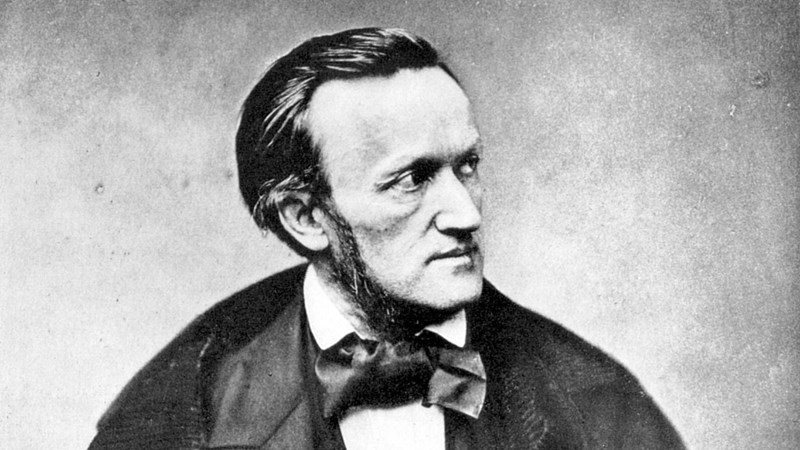It's all about the classical music composers and their works from the last 400 years and much more about music. Hier erfahren Sie alles über die klassischen Komponisten und ihre Meisterwerke der letzten vierhundert Jahre und vieles mehr über Klassische Musik.
Total Pageviews
Sunday, October 8, 2023
Don McLean - Vincent (Starry Starry Night) (1972)
🎻 32 really famous classical pieces you've heard and don't know the name! 🎶
Saturday, October 7, 2023
Andrea Bocelli - Vivo per lei
When You Believe | Sounds of the Season 2019
Friday, October 6, 2023
Barry White - My First My Last My Everything
Richard Wagner - his music and his life
Richard Wagner (born May 22, 1813; February 13, 1883). No composer has had so deep an influence on the course of his art, before or since. Entrepreneur, philosopher, poet, conductor, one of the key composers in history and most remarkable men of the 19th century, Wagner knew he was a genius. He was also an unpleasant, egocentric and unscrupulous human being.
Richard Wagner’s mother, Johanna, was the daughter of a baker in Weissenfels (though some papers show that she may have been the illegitimate daughter of Prince Friedrich Ferdinand Constantin of Weimar). At the time of Wagner’s birth, she was married to a police registrar named Karl Friedrich Wagner, who died when Richard was only six months old. Johanna had already been having an affair with Ludwig Geyer and had a daughter, Cäcilie, six months after they were married in 1814.
Geyer proved to be a profound influence on the young Wagner and surrounded him with books and paintings and, of course, introduced him to the theatre and music. Geyer died when Wagner was only eight but the seeds had been sown. It was literature that was the initial attraction, though, not music. Wagner was only 11 when he wrote a drama, drawn from Shakespeare and the Greeks, in which 42 characters died in the first four acts, and some of whom reappeared as ghosts in the fifth act.
His latent passion for music was aroused by a performance of Weber’s Der Freischütz; when he heard Beethoven’s Fidelio for the first time at the Gewandhaus, Leipzig, music became an obsession. He made arrangements of Beethoven’s symphonies, began to absorb scores and produced his first compositions: two orchestral overtures. These were premiered in Leipzig in 1829, the first works of Wagner to be performed. And all this before he had had any formal training.
A rebellious spirit
His future character traits were beginning to emerge – a rebel who was expelled from the Thomasschule in Leipzig and who was more concerned with duelling, drinking, gambling and women than his law studies at the University of Leipzig. During his brief sojourn there (he never took his degree), he became well known as a compulsive talker and for his dogmatic views.
In 1831 he left to undertake six fruitful months of studying counterpoint with the cantor of the Thomasschule. His teacher, Theodor Weinlig, admitted that after that period there was nothing more he could teach him. As far as we know, this was the only professional instruction he ever received. He did not have any further music lessons. Then Wagner struck out on his own, writing a symphony and three operas – Die Hochzeit and Die Feen to his own bloodcurdling librettos, and Das Liebesverbot based on Shakespeare’s Measure for Measure.
Musical disaster and poverty
At 22, Wagner was the conductor of a small opera house in Magdeburg. One reason for taking the job – the theatre was on the verge of bankruptcy – was his pursuit of a pretty young actress named Minna Planer. He was pursued by creditors claiming their gambling debts but in March 1836 the opera house produced Das Liebesverbot. It was such a fiasco that the theatre was empty at the second performance. It bankrupted the opera house. Wagner, overwhelmed with financial demands, left with Minna for a similar conducting post in Königsberg. They married in November 1836. The two of them then went on to Riga in Russian Poland to another opera post where they stayed unhappily for two years.
Eventually, Wagner was dismissed, hounded by creditors, his passport confiscated and he was forced to flee Russia via a smugglers’ route. At length, the couple arrived in Paris. From 1839 to 1842, he and Minna lived in abject poverty (on two occasions he was imprisoned for debt).
Building a reputation
But then came his first taste of success. His opera Rienzi, which he had begun in 1837, was accepted for production at the Dresden Opera. The opera, written in the approved Meyerbeer style, was a complete triumph and made Wagner’s name known throughout Germany.
Dresden next offered a production of Der fliegende Holländer, Wagner’s first tentative steps towards a new style of opera. It resulted in complete failure but in February 1843 Wagner was made director of the Dresden Opera. In the following six years he raised the standard of performance there to unprecedented heights in a series of painstakingly produced performances, including, in October 1845, the premiere of his own Tannhäuser. By 1848 he had almost completed a third operatic masterpiece, Lohengrin.
The Ring
That year was the year of revolution in Europe and its spirit had spread to Saxony by 1849. Wagner sided with the revolutionaries, producing radical pamphlets, making political speeches and sympathising with the rioters. When the revolution came to nothing he was forced to flee Germany and for the next 13 years he lived in exile in Zurich. Here, he formulated his revolutionary ideas about opera and the ‘music of the future’: the concept of ‘music drama’ involving a synthesis of all the arts. The plan that began to occupy his mind was a giant project of four dramas in which all his theories would be realised, an opera cycle called Der Ring des Nibelungen. It took him a quarter of century to complete it.
Meanwhile, Franz Liszt had mounted the world premiere of Lohengrin (Weimar, 1850). Its fabulous success made Wagner the most famous living composer of German opera, though he was unable to attend any performances of his work there. At one time he lamented that he was just about the only German who had never seen a performance of Lohengrin.
Tristan und Isolde
While working on The Ring, Wagner interrupted his labours with two other music dramas, Tristan und Isolde (1859) and Die Meistersinger von Nürnberg (1867). The friendship and generosity of a wealthy silk merchant, Otto Wesendonck, allowed him to live in a luxurious villa in Zürich while he was working on The Ring and Tristan. The friendship and generosity were repaid by Wagner having a passionate affair with Otto’s wife, Mathilde.
Much of Tristan was written under her influence; she may even have been the inspiration for the work, though it’s just as likely that Wagner fell in love her because he was working on Tristan. Whatever, Tristan und Isolde is one of the most important works of the 19th century and its harmonic innovations exercised an enormous influence on the future of music, paving the way for Mahler and Schoenberg.
At length, the domestic situation in Zurich became impossible. Otto was fully aware of the situation and eventually provided funds for Wagner and Minna to travel to Paris in 1859. Wagner’s marriage had broken down irretrievably and soon a third married woman had entered his life.
Cosima
In 1862 Wagner fell in love with Cosima, the daughter of Franz Liszt and the wife of his friend and champion, the pianist and conductor Hans von Bülow. The mesmeric power Wagner exercised over his admirers is no better illustrated than by von Bülow. First, Wagner and Cosima had an illegitimate daughter named Isolde; they then had a second illegitimate daughter, Eva. Only then, and after Minna had conveniently died in 1866, did Cosima desert her husband and set up house with Wagner. Throughout, von Bülow remained devoted to Wagner and wrote to Cosima, ‘You have preferred to devote your life and the treasures of your mind to one who is my superior. Far from blaming you I approve your action from every point of view and admit you are perfectly right’.
Cosima was the woman for whom Wagner had been searching all his life, someone of great intelligence and independence of mind who would provide stability, adulation and understanding whenever it was needed. He remained with her for the rest of his life – well, nearly. After Wagner’s death, the imperious Cosima, born in 1837, became the guardian of the Wagner shrine and survived until as late as 1930.
Return to Germany
In the meantime, a political amnesty allowed Wagner to return to Germany in 1860. Four years later, his fortunes changed dramatically when the young King Ludwig II of Bavaria ascended the throne. He invited Wagner to Munich and promised him unlimited support for all his projects. It’s very likely he was in love with Wagner but, at any rate, a mutual admiration society flourished on a grand scale and, between 1865 and 1870, Munich was host to the world premieres of Tristan und Isolde, Die Meistersinger, Das Rheingold and Die Walküre (the last two being the first completed sections of The Ring).
Ludwig’s lavish support of Wagner soon brought him into conflict with the Bavarian Cabinet, who advised that the whole economy would collapse if the King continued his patronage on such a reckless scale. They were also frightened by Wagner’s political dabbling and his hold over the King, scandalised by his morals (everyone knew about his relationship with Cosima) and observed this arrogant musician with more than a little concern.
Wagner retreated to a palatial estate on Lake Lucerne (paid for by Ludwig) where he was joined by Cosima. Here Eva was born (1867), and their first son Siegfried (1869). They eventually married in August 1870.
The building of Bayreuth
In 1871 Wagner announced plans for another gargantuan scheme. Not a music drama but a building, a special festival theatre where his works could be mounted under ideal conditions, produced to his own specifications. The council of the little Bavarian town of Bayreuth offered him a site and in May 1872 the cornerstone was laid.
It was a huge undertaking and Wagner characteristically took to realising his dream with extraordinary vigour and determination. No setback troubled him – he persuaded wealthy patrons to provide part of the subsidy, he conducted concerts to help raise money, King Ludwig coughed up 100,000 talers and, eventually, the Bayreuth Festival Theatre was unveiled on August 13, 1876.
The opening performance was the first complete presentation of the Ring cycle, Siegfried and Götterdämmerung receiving their world premieres. The event attracted world attention. Four thousand visitors were crammed into Bayreuth, including the Emperor and Empress of Germany, the Emperor and Empress of Brazil and Grand Duke Vladimir of Russia, along with other crowned heads and many of the greatest composers, including Tchaikovsky, Gounod, Saint-Saëns, Grieg and Liszt.
Such novelties as gas lighting linked to electric projectors and a magic lantern illuminating the Ride of the Valkyries matched the startling originality of the operas themselves. The festival made a huge deficit but at the closing party Wagner had the good grace to pay tribute to Liszt. He owed him, he said, everything. Today the Bayreuth theatre remains a living shrine to Wagner’s music and vision.
Basking in his fame, relative wealth and security (though money worries continued to nag), living in the comfort of the Villa Wahnfried a few miles from the festival theatre in Bayreuth, Wagner settled down to other things. He had a final fling with a married woman. This time it was the beautiful daughter of the poet Théophile Gautier, Judith, wife of the poet Catulle Mendès. Judith Mendès, who was 40 years younger than Wagner, actually moved into the Villa Wahnfried (Cosima turned a blind eye) before returning to her husband in 1878.
Poisonous views
Wagner finished his last opera or ‘consecrational play’, Parsifal, while producing a series of pamphlets and publications. In his all-embracing wisdom, he promulgated his lofty views on any number of topics. He believed the world could be saved if everyone ate vegetables instead of meat; he ranted on about racial purity – the Jews were former cannibals, Christ was not a Jew but an Aryan, the Aryans had sprung from the gods, and so forth – all the things which led Hitler to say ‘Whoever wants to understand National Socialist Germany must know Wagner’.
Death
In August 1882 Wagner conducted a performance of Parsifal. It was his last public appearance as a conductor. He was exhausted and began to have premonitions of death. Later in the year he, Cosima and their children travelled to Venice for a lengthy holiday. As a birthday gift to his wife, Wagner conducted a private performance of his youthful symphony in December 1882. It was his last musical act. Six weeks later he died of a massive heart attack. His body was brought back to Bayreuth, where it was buried in a vault in the garden of his villa to the strains of the funeral march from Götterdämmerung.
Incidentally, King Ludwig was faithful to the end to his ‘divine friend’, the man to whom he wrote, ‘I can only adore you…an earthly being cannot requite a divine spirit’. His mental state deteriorated and he was committed to an asylum. On June 13, 1883, three months to the day after Wagner’s death, Ludwig overpowered a psychiatrist who was escorting him on a walk and dragged him to the bottom of the Starnberg Lake, drowning himself in the process.
Andrea Bocelli, Ariana Grande - E Più Ti Penso
Italian night
The Philippine Philharmonic Orchestra’s second concert of this season features cellist Wen-Sinn Yang as soloist.
AT A GLANCE
Wen-Sinn Yang’s wide-ranging repertoire is documented on more than 30 CDs. These include not only the principal works for violoncello by Boccherini, Haydn, Beethoven, Schubert, Saint-Saens, Lalo, Tchaikovsky, and Dvořák but also compositions by Henri Vieuxtemps, Frank Martin, Leonid Sabaneev, and Sofia Gubaidulina.

Cellist Wen Sinn Yang
Cellist Wen-Sinn Yang will be the featured soloist for the second concert of the Philippine Philharmonic Orchestra this concert season under the baton of Maestro Grzegorz Nowak on Oct. 13, 7:30 p.m., at the Samsung Performing Arts Theater at Circuit Makati.
For the second concert, dubbed “Italian Night,” the Swiss-born cellist will perform Antonin Dvořák’s “Cello Concerto, op.104, B minor.” The concert’s program also includes “Sarung Banggi: A Symphonic Serenade by Potenciano Gregorio Sr. (arr. Angel Peña),” and Felix Mendelssohn’s “Symphony No. 4, op.90, A major” (Italian).
“As always, music enthusiasts can expect extensive program repertoire from the PPO’s 39th concert season, dubbed Switch, under the baton of Maestro Nowak. Having the Maestro on our team is a welcome development as we—both the CCP and the PPO—continue to fulfill our mandate to bring artistic excellence to greater heights and utilize arts for the national development,” says CCP president Michelle Nikki Junia.
Enthusiasm for the unknown and constant research distinguishes Wen-Sinn Yang as one of the most versatile cellists of the present day. His performances not only revive the music of 19th-century cello virtuosos such as Adrien François Servais and Karl Yulievich Davydov, but also introduce his audiences to such modern composers as Aribert Reimann and Isang Yun.
Alongside his activities as an internationally renowned soloist under conductors, including Sir Colin Davis, Lorin Maazel, Mariss Jansons, Shiao-Chia Lü, Grzegorz Nowak, Daniel Klajner, Yukata Sado, and Michael Hofstetter and with such orchestras as the Bavarian Radio Symphony Orchestra, the Shanghai Symphony, the NHK Tokyo, the Royal Philharmonic Orchestra, and the Russian State Orchestra of Moscow, Wen-Sinn Yang is also a highly sought-after chamber music partner. His mastery and technical skill are not only strongly expressive but also particularly sensitive, which continues to open up ever-new listening perspectives.

Wen-Sinn Yang’s wide-ranging repertoire is documented on more than 30 CDs. These include not only the principal works for violoncello by Boccherini, Haydn, Beethoven, Schubert, Saint-Saens, Lalo, Tchaikovsky, and Dvořák but also compositions by Henri Vieuxtemps, Frank Martin, Leonid Sabaneev, and Sofia Gubaidulina. Many of these are distinguished as premiere recordings.
Yang has been a professor of Violoncello at the Academy of Music and Theatre in Munich since 2004 and also regularly conducts international master courses.
Maestro Grzegorz Nowak is currently the Philippine Philharmonic Orchestra’s music director and principal conductor. He is also a permanent associate conductor of the Royal Philharmonic Orchestra, London, UK. He was music director of the Polish National Opera in Warsaw, Poland from 2017 to 2020 and other orchestras in Poland, Germany, Switzerland, and the US. He has conducted orchestral music recorded in over 80 CDs that have received awards and five-star ratings.
Tickets are priced at ₱3,000 (Orchestra Center), ₱2,000 (Orchestra Side), ₱2,500 (Loge Center), ₱1,500 (Loge Side), and ₱800 (Balcony 1). www.culturalcenter.gov.ph
The Music of Poetry
by Georg Predota, Interlude
Publication History
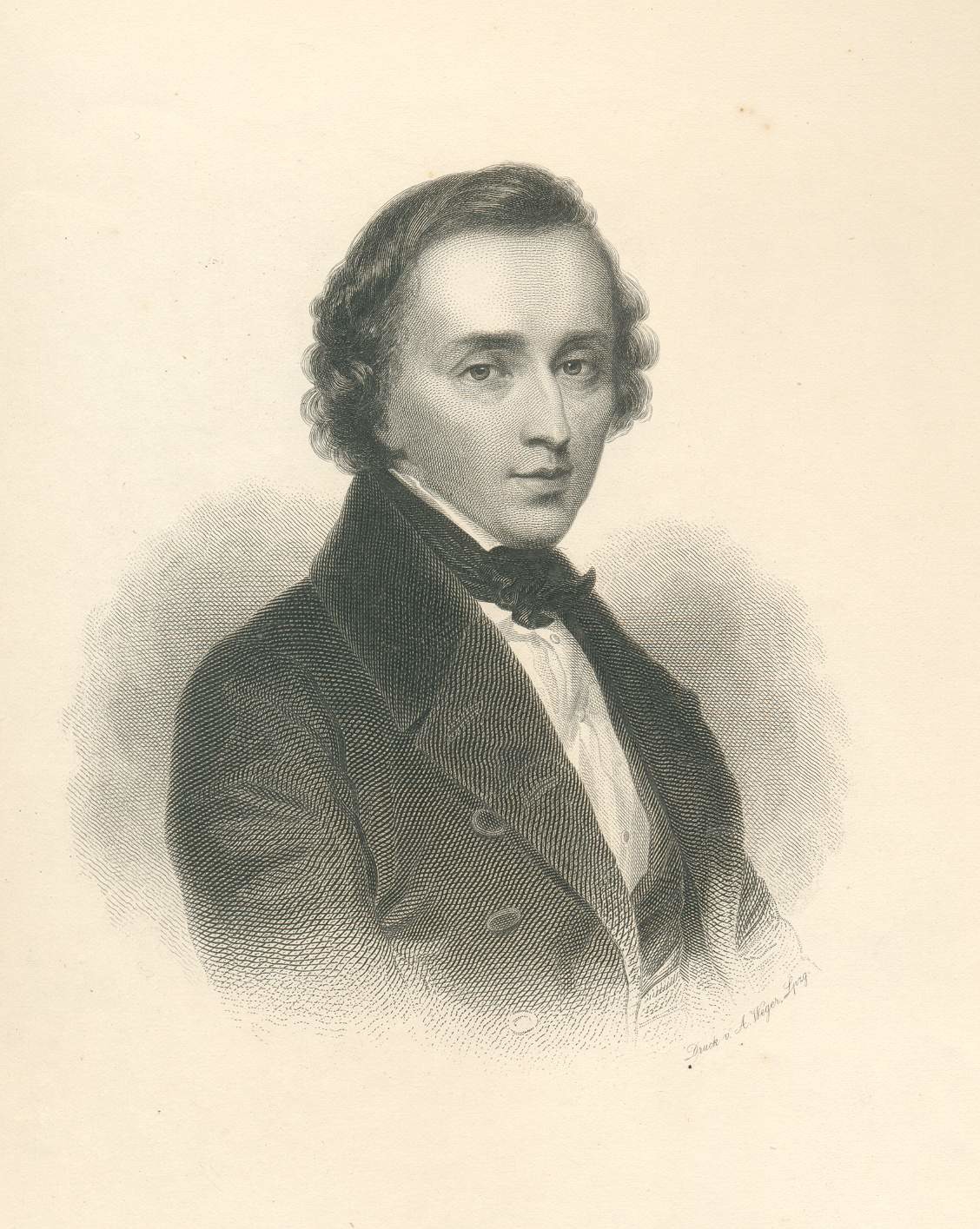
Frédéric Chopin
Chopin actually did not approve for his songs to be published at all. Juliusz Fontana, the composer’s friend and later the editor of the songs, mentioned that in Paris, at emigrant evenings, Chopin “in the moments of hearty frankness would recite them with intonation and accompaniment of the piano, with a book of poetry in front of him, postponing the moment of writing them down.”
Chopin did extemporize his songs at various times, from possibly as early as 1827 when he was 17, to 1847, two years before his death. All but one of the texts is based on original poems by Polish contemporaries, many of whom Chopin personally knew. As only two of them were published in his lifetime, Chopin’s mother and his sister sought to bring them to the public by looking for a suitable publisher. By 1857 the remaining 17 Polish songs had been collected and issued as Chopin’s Opus 74 by the publishing firm of Heinrich Schlesinger.
Chopin’s Study With Józef Elsner
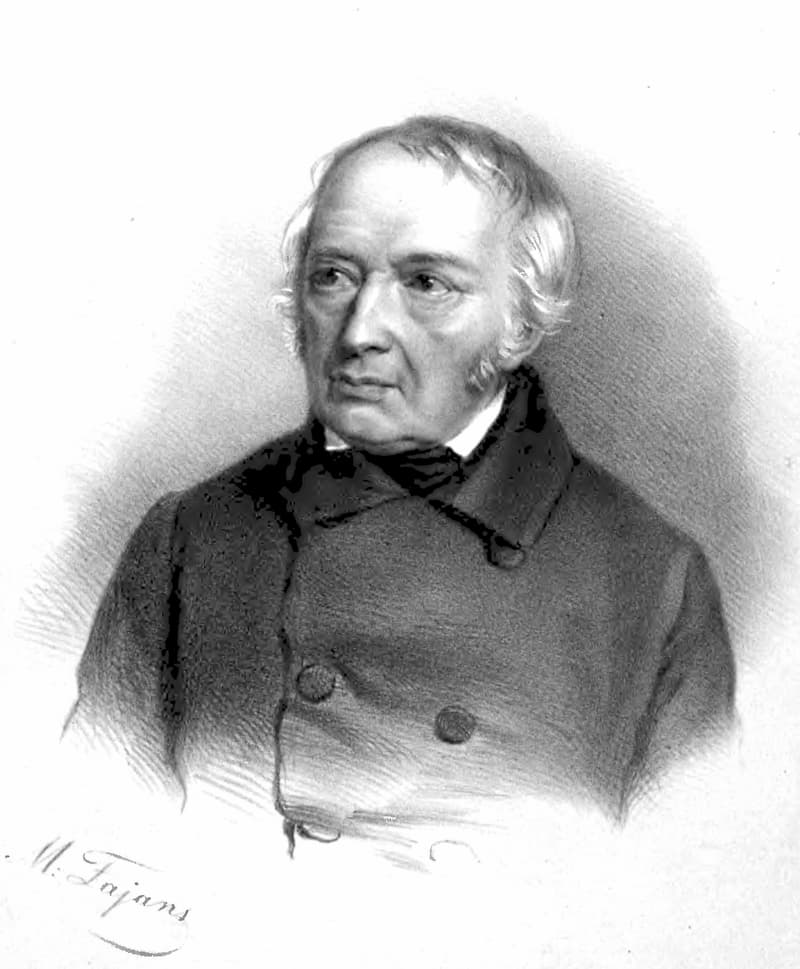
Józef Elsner
The Polish composer, music teacher, and music theoretician Józef Elsner is probably best known as the principal composition teacher of the young Frédéric Chopin. In his Treatise on Polish Poetry with Regard to Music of 1818, Elsner explored one of the most significant musical issues of his time. That being the creation of national music through the setting of contemporary, and often radical, Polish texts.
As he writes, “Every intelligent, creative person who understands the relationship between music and poetry, and who is connected to one of the other is deeply moved by it, must be aware of the shared perfection of the two arts. The influence of music on poetry, and poetry on music is so important, that one art form cannot be precisely and fully explained without reference to the other.”
The earliest Chopin art song in his Op. 74 collection was published only ten years after the publication of Elsner’s treatise. In fact, Chopin had been interested in art song composition from the time of his earliest studies with Elsner, and in his early group of songs, Chopin adheres strictly to “Elsner’s rules on the accentuation of penultimate syllables in closing phrases and section.”
If I were the sun in the sky
I wouldn’t shine just on you.
Neither on lakes
nor forests
but on everything;
Oh the times under your window and only for you
If I could only change into the sun.
If I were a bird from that forest
I wouldn’t sing in any foreign country
Neither on lakes
nor forests
but on everything;
Oh the times under your window and only for you
If I could only change into a bird.
(trans. Christopher Lapkowski)
Songs Composed During His Teenage Years in Warsaw
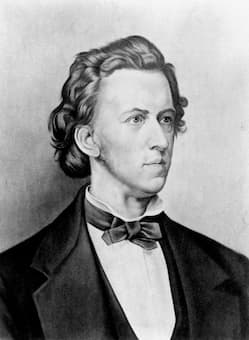
Frédéric Chopin, 1873
During his teenage years in Warsaw, Chopin seemed to have spontaneously composed a number of songs in a local coffee house. He regularly attended with his friends, and “Chopin would simply sit down at the piano and play.” The poet Stefan Witwicki (1801-1847) was part of the Chopin circle, and like the composer, he was interested in the ideals of Polish nationalism. Chopin set eight poems by Witwicki, beginning around 1829 with “Życzenie” (A Maiden’s Wish) and “Gdzie lubi” (Where She Loves).
These songs seemed to have quickly gained popularity and were circulated in copies with added accompaniment, and occasionally with changed lyrics. Chopin stayed in touch with Witwicki after he left the country, and in July 1831 the poet sent a letter to Vienna.
“Dear Mr. Fryderyk, let me remind myself to your memory. I would like to thank you for the songs. Both I and everyone who knows them like them very much and you would admit to yourself that they are very beautiful if you heard them performed by your sister. Your friend Witwicki… If you wanted to write music to another song…”
Chopin’s early songs feature, for the most part, regular four-measure phrasing subdivided into smaller two-measure units. He rarely employs successive melodic accents within the closing phase, “and his songs can perhaps be best interpreted as a transformation of original folk melody and vernacular text. Such melodies and texts are given new interpretations within the art song framework, particularly in terms of dramatic intent and ornamentation of accented syllables.” And while there are tangible allusions to folksong in Chopin settings, there is no documented evidence to suggest that the composer quoted directly from folk sources. My darling, when in a joyous moment
You begin to chatter and wail and coo,
Such lovely cooing, chattering and wailing
Not wanting to miss a single word,
I dare not interrupt, I dare not respond,
I only wish to listen!
But when the vividness of speech lights your eyes
And rosies the berries more intensely
Pearly teeth shine among corals,
Ah! then I will look boldly in your eyes
I hurry my lips and to do not demand to listen,
Only to kiss!
(trans. Jennifer Gliere)
Poetry by Adam Mickiewicz
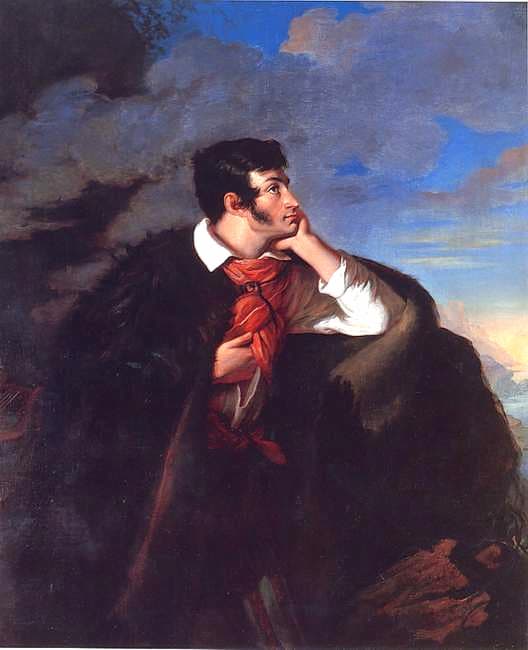
Adam Mickiewicz
The Polish-Lithuanian poet Adam Mickiewicz (1798–1855) is regarded as a national poet in Poland, Lithuania and Belarus. A principle figure in Polish Romanticism, he is one of the so-called “Three Bards,” whose work was thought to give perfect expression to Polish nationalism. Chopin and Mickiewicz were close friends, particularly during the years when Chopin lived in Paris. Perhaps their most significant point of convergence was the intensity of their national feelings and the homesickness they both experienced.
Mickiewicz fondly remembered Chopin as “the sweetest figure” he had ever known. According to Robert Schumann, Mickiewicz supposedly inspired Chopin’s piano ballades, but we know with certainty that Chopin set two Mickiewicz poems. These settings are separated by about ten years, with the liltingly beautiful love song “My darling” written in 1837, and the declamatory “Out of my sight” dating from 1827.
Out of my sight! Leave me I beg you!
Out of my heart! I cannot go against you.
Out of my thoughts! No, that ultimate surrender
Our memories could ever render.
As evening shadows lengthen
And stretch their sad imploring arms,
My face will shine brighter in your mind
The further you are from me.
In every season in places close to our hearts,
Where we have shared laughter, tears and glances,
Always and everywhere shall I be with you,
For everywhere I have left a part of my soul.
Poetry by Bohdan Zaleski
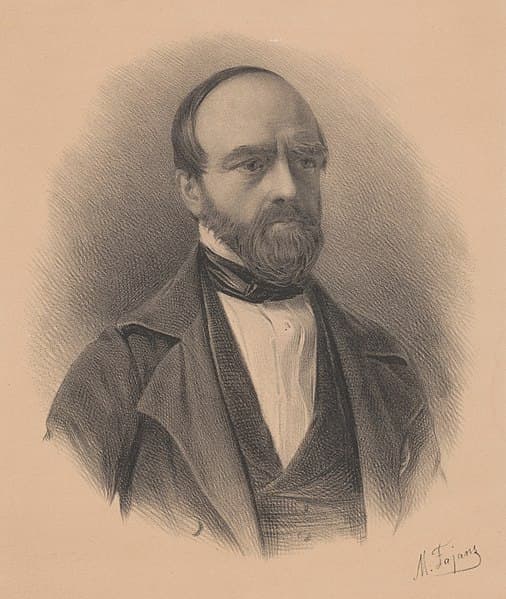
Bohdan Zaleski
The Polish-Ukrainian poet Bohdan Zaleski (1802-1886) was part of the Mickiewicz circle, and an active member of a number of nationalist organizations, including the Slavonic Society and the Polish Democratic Society. Zaleski was associated with Romanticism and sentimentalism, and his love and reflective lyrics were inspired by folk poetry. Zaleski was a personal friend of Chopin, and his wife was the composer’s piano student between 1843 and 1844. In all, Chopin set four of Zaleski’s poems, and he seems to have been particularly interested in Zaleski’s historical dumkas.
Originating in Ukraine, the dumka was performed by itinerant Cossack bards and centered on historical events, often dealing with military actions. Although the narratives mainly revolve around war, they primarily impart a moral message in which one should conduct oneself properly in relationships with the family, the community, and the church. Chopin’s melody is reminiscent of a bard’s song, and the accompaniment mimics the strokes of the lyre. This is clearly a lyrical lament of a wanderer far from his homeland, a sentiment that Chopin could readily identify with.
My eyes mist over with tears from deep within me,
All around me darkness is gathering;
A dumka wells up and dies on my lips
In silence, ah, in the silence of unhappiness.
What bliss it would be to love and to sing!
Then I would dream in this alien
wilderness as I did at home;
I long to love — and there is no one.
I long to sing — and there is no one to sing to.
Poetry by Wincenty Pol
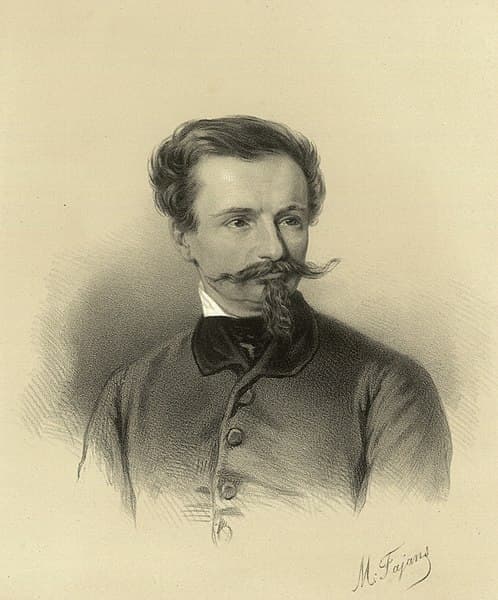
Wincenty Pol
The Polish poet and geographer Wincenty Pol (1807-1872) fought in the Polish army during the November 1830 Uprising. This armed rebellion in the heartland of partitioned Poland was fought against the Russian Empire. A substantial segment of people from Lithuania, Belarus, and Ukraine joined the uprising, and although the insurgents achieved local successes, a numerically superior Imperial Russian crushed the uprising. Pol published a collection of highly popular poems of the revolt titled “Songs of Janusz.” Apparently, Chopin composed music to ten or twelve of these, but only “Leaves are falling” has survived.
The leaves are falling from a tree
Which grew to maturity in freedom;
A little field bird sings
From on top of a gravemound.
O Poland,
You have fared badly!
It was all just a dream
And your children are dead.
Your hamlets have been burnt down,
Your towns destroyed,
And in the fields round about
A woman is lamenting.
Everyone left their homes,
Carrying their scythes with them;
Now there is no one left to work,
And the crops are wasting in the fields.
When the young men gathered
Near Warsaw,
It seemed as though the whole of Poland
Would cover herself with glory.
They had the upper hand all winter,
They fought the summer through;
But in the autumn
There were not even enough
adolescents left to continue.
Now the battles are over,
But all was in vain,
For none of our brethren are coming back
To their fields.
Some lie pressed beneath the sod,
Others have been led away captive,
Others are scattered throughout the world
With no home or farmland.
There is no help from heaven
Or from human hands;
The soil is lying waste
And Nature displays her charms for nothing.
The leaves are falling from the tree,
Again they are falling.
Oh, land of Poland!
If those countrymen
Who are dying for you
Had set to work
And carried away their homeland’s soil
A handful at a time,
They would already have built Poland
With their hands.
But distinguishing ourselves by a show of strength
Is nowadays beyond our imagining,
For traitors have proliferated
And the common people are too good-natured.
Chopin’s setting seems very much like a recorded improvisation. Rhapsodic in character, the song mourns the fate of a nation and of a generation rather than individual events. An expressive yet internalized interpretation takes away all of the threatening pathos, replaced with a subdued lament in an elevated mood.
Importance and Legacy
According to scholars, “Chopin’s songs brought to the European Romantic song repertoire a character and a tone it had lacked before. They brought the simplicity of a first-hand folkloric inspiration, an almost naive, youthful tenderness, a boisterous aplomb, a nostalgic reflection, and finally a deep feeling for one’s country.” For a number of critics, these songs are regarded as artistically unimpressive, and of minor significance in the entire creative work of the composer. To be sure, Chopin himself attached so little meaning to the songs that he never had a single song published. However, he surely wanted his vocal miniatures to fleetingly stir the emotions, to draw a smile or a tear. As such, “read with an understanding of tone and style, sung and played in a natural yet intimate way, they can charm and transform, move and disturb.”
